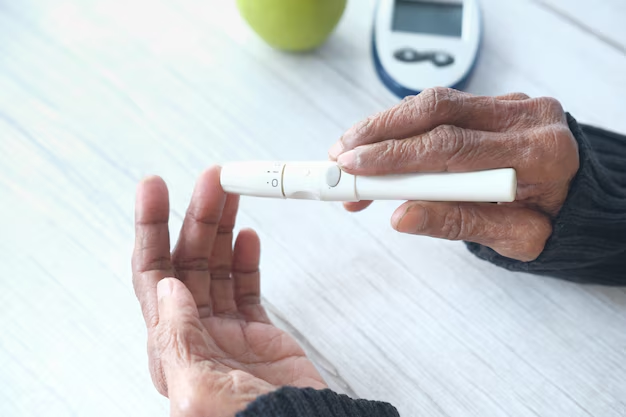Exploring the Essential Differences in Diabetes Types and Management
Living with diabetes means managing numerous aspects of your health, but the journey varies significantly depending on the type and nature of diabetes you have. Understanding the differences between diabetes types is crucial for effective management and living a fulfilling life. In this article, we'll delve into the critical distinctions between Type 1, Type 2, and gestational diabetes, and how these impact treatment and lifestyle choices.
🩸 Understanding Diabetes: A Brief Overview
Diabetes is a chronic health condition characterized by elevated blood sugar levels. If unmanaged, high blood sugar can lead to serious health complications affecting the heart, kidneys, eyes, and nerves. Diabetes primarily manifests as three types: Type 1, Type 2, and gestational diabetes. Each type has unique characteristics, risk factors, and management strategies.
Type 1 Diabetes: Autoimmune Origin
Type 1 diabetes is often diagnosed in childhood or adolescence but can occur at any age. It’s an autoimmune condition where the body’s immune system mistakenly attacks the insulin-producing beta cells in the pancreas. This results in little to no insulin production, necessitating lifelong insulin therapy.
Key Characteristics:
- Autoimmune nature
- Typically diagnosed in younger individuals
- Absolute insulin deficiency
Management Strategies:
- Daily insulin injections or use of an insulin pump
- Regular blood sugar monitoring
- Attention to diet and carbohydrate counting
Type 2 Diabetes: Insulin Resistance
Type 2 diabetes is primarily characterized by insulin resistance, where the body's cells don’t effectively utilize insulin. Unlike Type 1, it’s more common in adults, especially those with a family history of the condition, are overweight, or have a sedentary lifestyle.
Key Characteristics:
- Insulin resistance
- Often linked with lifestyle factors
- Gradual onset
Management Strategies:
- Lifestyle modification (diet and exercise)
- Oral medications or insulin therapy as needed
- Regular blood sugar monitoring
Gestational Diabetes: Temporary yet Critical
Gestational diabetes occurs during pregnancy and typically resolves after childbirth. However, women who experience this are at a higher risk for developing Type 2 diabetes later in life.
Key Characteristics:
- Occurs during pregnancy
- Temporary but increases future health risks
Management Strategies:
- Monitoring and managing blood sugar levels
- Dietary adjustments
- Exercise, as advised by healthcare providers
🌟 Key Differences Among Diabetes Types
Understanding how each type of diabetes differs helps in tailoring individual care plans and improving outcomes.
Cause and Onset:
- Type 1: Autoimmune destruction; rapid onset.
- Type 2: Lifestyle-related; gradual onset.
- Gestational: Hormonal; occurs during pregnancy.
Symptoms:
- Common: Increased thirst, frequent urination, fatigue.
- Type-specific: Weight loss (Type 1), blurred vision (Type 2), excessive hunger (Gestational).
Management:
- Type 1: Insulin-centered approaches.
- Type 2: Lifestyle interventions and medications.
- Gestational: Focused on pregnancy-safe interventions.
Risk Factors:
- Type 1: Family history, genetics.
- Type 2: Obesity, physical inactivity, age.
- Gestational: Previous gestational diabetes, age over 25, obesity.
🛠️ Practical Management Tips
To effectively manage diabetes, you can incorporate various strategies tailored to your specific condition. Below are some universal tips that apply across all diabetes types:
Exercise Regularly 🏃♀️
Engaging in regular physical activity helps improve insulin sensitivity and aids in maintaining a healthy weight. For Type 1, it’s important to monitor blood sugar levels before and after exercise.
Nutritional Balance 🍽️
A balanced diet rich in vegetables, whole grains, lean proteins, and healthy fats can help manage blood sugar levels. Carbohydrate counting is especially crucial in Type 1 diabetes to adjust insulin doses accordingly.
Key Nutritional Focus:
- Whole, unprocessed foods
- Limited added sugars and refined carbs
- Adequate fiber and healthy fats
Monitor Blood Sugar Levels 📈
Regular monitoring allows for better understanding of how dietary choices, physical activity, and medications affect your glucose levels, helping you stay within target ranges. Use of a digital log can help track patterns and personalize your management plan.
Medications and Technology 💉
- For Type 1: Insulin pumps and Continuous Glucose Monitors (CGMs) can enhance glucose control.
- For Type 2 and Gestational: Medications may include metformin or insulin depending on blood glucose levels and pregnancy-specific safety.
Education and Support 📚
Empowering yourself through education and support can drastically affect management success. Consider joining diabetes support groups, attending educational workshops, and working closely with healthcare professionals.
🤝 Living with Diabetes: Adapting for Quality of Life
While diabetes is a chronic condition, modern management strategies have significantly improved life quality for those living with it. Here are some empowering steps to take:
Consistency is Key: Adopting a consistent routine in monitoring, exercise, and meal times can stabilize blood sugar fluctuations.
Stay Informed and Proactive: Keep abreast of new research and technologies in diabetes care to optimize your treatment plan.
Mindful Living: Incorporate stress-reducing activities such as meditation, yoga, or hobbies that bring joy. Stress can negatively affect blood glucose levels.
Seek Support: Building a network of caregivers, fellow individuals with diabetes, and advocates can provide the community and motivation necessary for management.
📋 Quick Summary Table
| Type of Diabetes | Main Cause | Key Management Strategies |
|---|---|---|
| Type 1 | Autoimmune | Insulin therapy, carbohydrate counting |
| Type 2 | Lifestyle factors | Diet, exercise, medications |
| Gestational | Pregnancy-related hormones | Diet, exercise, glucose monitoring |
🚀 Conclusion
Understanding the differences in diabetes types equips individuals to better manage their condition and engage in proactive health decisions. While each type of diabetes presents unique challenges, integrating lifestyle adjustments, regular monitoring, and cutting-edge tools can lead to a healthy, fulfilling life with diabetes. Stay informed, harness available support systems, and remember, managing diabetes is a journey of empowerment, knowledge, and resilience.
